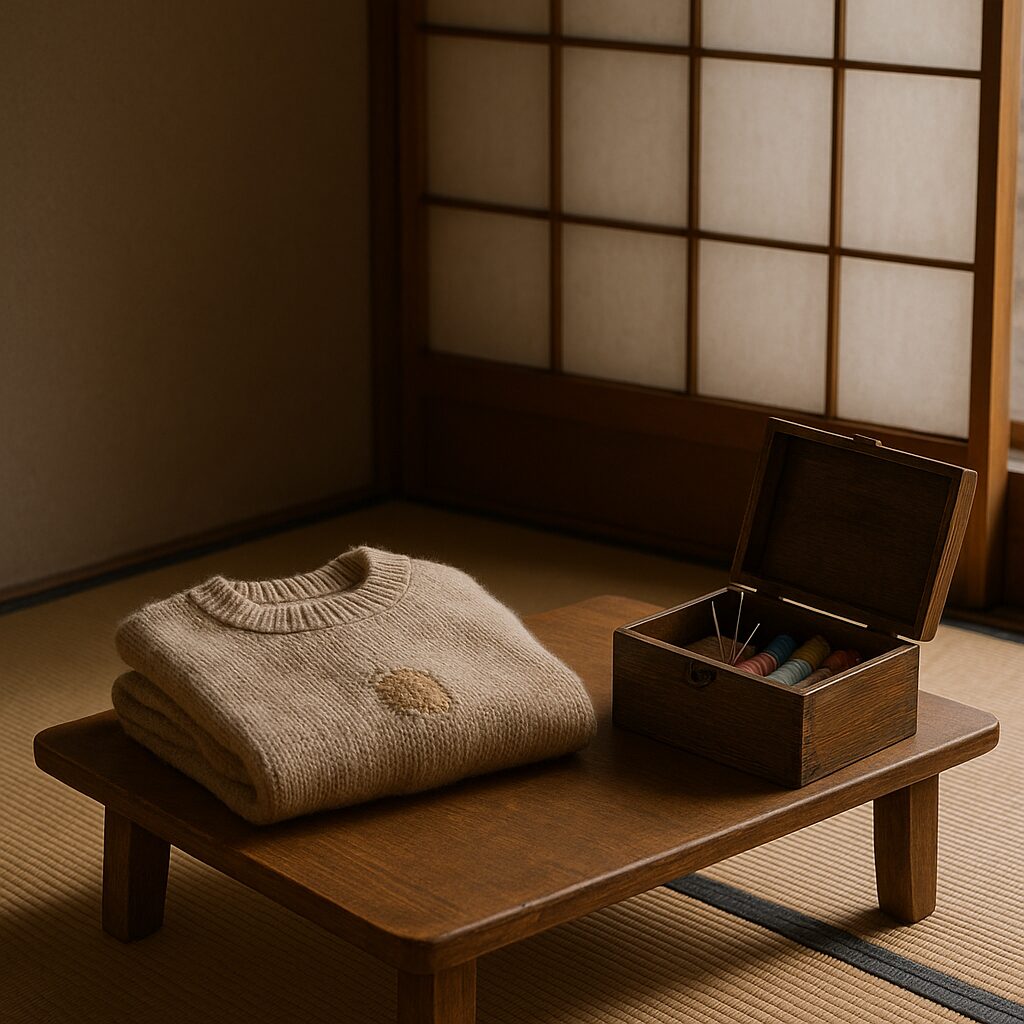By Kokoro Still
A thread does not break all at once.
It frays—
quietly, almost without asking to be seen—
until the hand decides to mend it.
Some things are not discarded.
They are stitched back,
patiently,
with Kokoro that holds more than the cloth itself.
What Remains in the Stitch
The first fray I ever noticed
was not in something new.
It was in a sweater my grandmother had once mended—
a row of careful stitches
where the yarn had worn thin.
The thread was a shade different from the rest.
If you looked closely,
you could see where the old and the new met—
not perfectly aligned,
yet holding as if they had always known each other.
In Japan, mending is not about erasing the break.
It is about letting it live,
letting the stitch speak quietly
of the hands that chose to keep it.
The Sound of the Thread
When the needle moved,
there was no sound to measure it—
no ticking, no chime.
Only a faint, almost weightless sound
of thread passing through cloth,
blending into the stillness of the room.
I listened,
and in that quietness,
knew this was the presence of something
being gently held together.
Fraying, Mending, Remembering
Years later,
I found the same sweater folded in a drawer.
The mended place was still there—
the thread slightly loosened,
but holding.
I touched it without thinking.
What I felt was not just wool.
It was the winter light in her room,
the shape of her hands,
and the patience that had waited
for me to notice.
What was mended was never the cloth alone.
It was the time between us—
stitched quietly,
without asking for notice.
And still, the stitch holds,
as if Kokoro were a thread
that frays slowly,
yet refuses to break.
(And in that stitch, I find the thread I once saw in her hands— the same one that began my listening.)
Featured image: The image was created by AI (ChatGPT)



Comments